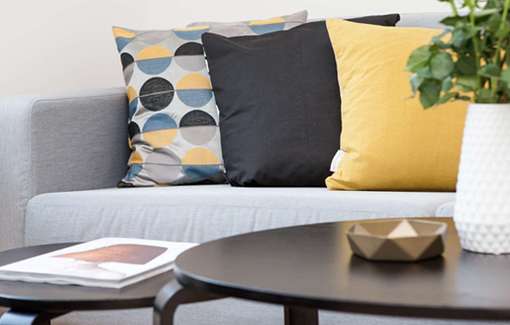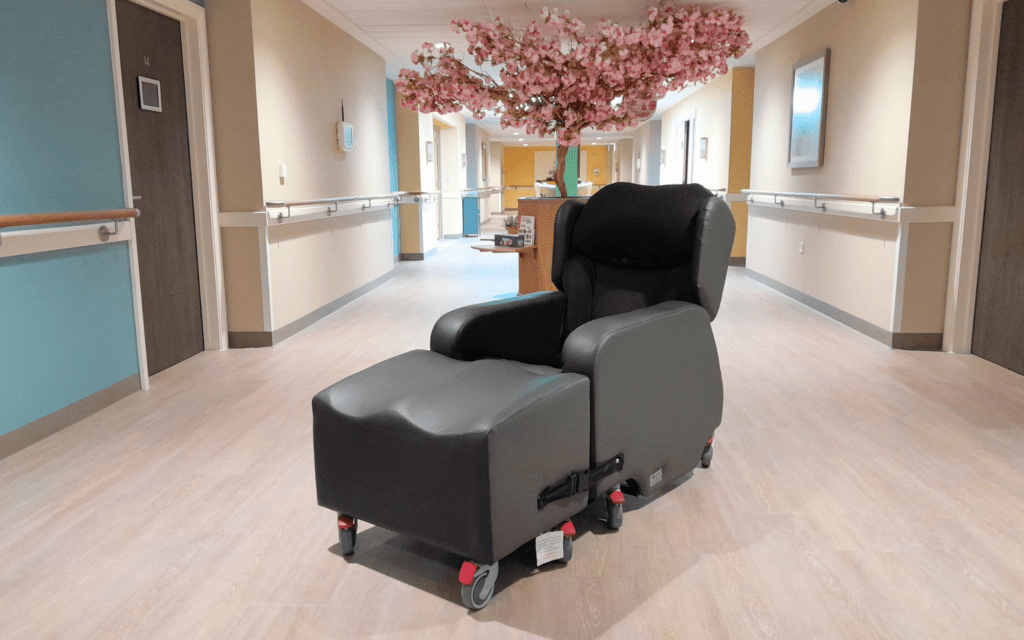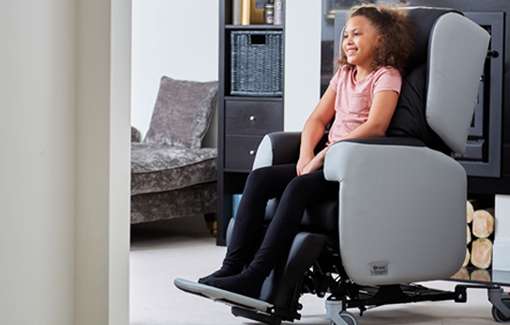For wheelchair users, their wheelchair is essential for maintaining their independence and ability to carry out everyday tasks. Therefore, when getting an upgrade or choosing your first wheelchair, it’s very important to get the right one for you!
When choosing an active user wheelchair, there are many factors to consider. These chairs are designed for users with active lifestyles. So, there are lots of customisation options to help tailor wheelchairs to suit individual requirements.
In this post, we have pulled together the top seven questions we ask (and get asked by clients) during assessments. By taking time to answer each question, you’ll be well on your way to finding the perfect active user wheelchair for you…
Jump straight to…
-
- Have you used an active user wheelchair before?
- What do you like and dislike about your current wheelchair?
- How will you be using your wheelchair?
- What medical conditions do you have?
- Will you be self-propelling all the time?
- Do you want a folding or rigid wheelchair?
- Have you got any personal preferences?
1. Have you used an active user wheelchair before?
This is generally the first and most important question.
If you’re looking for your first active user wheelchair, it can help to really familiarise yourself with what they are and how they work first.
Is an active user wheelchair right for you?
You want to be sure an active user wheelchair is the best fit for you before you start looking to buy!
Tip: We only recommend active user wheelchairs for people with good upper body strength and trunk stability. This is because active user wheelchairs are self-propelled – you need your strength to push yourself along.
If you’re a first-time wheelchair user, or have only used electric wheelchairs in the past, test an active user wheelchair out before committing to anything.

We have plenty in stock in our showroom. Pop in, or book a free appointment, to try one for yourself!
Check out our full Guide to Active User Wheelchairs for more background information.
Are you used to self-propelling?
Another point to be aware of, it can take a while to adapt to self-propelling.
Even if you’ve had a manual wheelchair before, active user wheelchairs can feel quite different to manoeuvre. Many of our clients who’ve previously used NHS-prescribed wheelchairs notice that an active user chair is more lightweight and drives differently.
To make the transition easier, there are active user wheelchairs designed specifically for beginners.
In our Guide to the Best Wheelchairs for Sport & Active Users the Kuschall Compact was rated the best option for beginners.
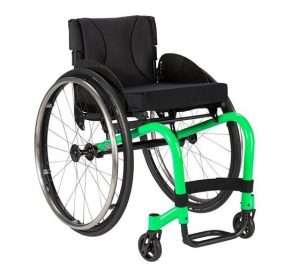
However, if you have used one before, that brings us onto the second key question…
2. What do you like and dislike about your current wheelchair?
If you come to our showroom for an assessment with our specialist, David, you don’t have to bring your current chair with you. However, we will always ask you some questions about it.
Some key questions to think about include:
- How comfortable is your current chair?
- Do you have any problems with manoeuvrability?
- Is it too heavy or light for you?
- Is it a rigid or folding wheelchair? Is that working well for you?
By asking these questions, we can find out what has worked well for you before and what was a struggle.
This information helps find you the right model, accessories, and add-ons so you have an even better experience with your new wheelchair!
Sizing is key
If you do bring your current chair with you, we can also identify any issues with the seat sizing.
During an assessment, David will take a full set of measurements to make sure all aspects of sizing are accurate.
The key measurements for wheelchair seat sizing are:
- Seat height
- Seat depth
- Seat width
- Backrest height
- Armrest height
3. How will you be using your wheelchair?
Think about your day-to-day life and what you want to be able to do in your new wheelchair.
Will you be:
- Mainly indoors or outdoors?
- Travelling long distances?
- In the city or countryside?
- Using it for sports?
- Sitting in the chair all day?
Different models of active user wheelchair are suited to different lifestyles.
So, by really thinking what you will use your wheelchair for, we can again ensure you get the most suitable chair for your needs and goals.
For example, if you are going to use your new wheelchair for sports (and use something else day-to-day) we’d recommend the Multisport wheelchair. It is perfectly suited to a wide range of sports!

Whereas, if you love nature and spend time outdoors on rougher terrain, we’d recommend a set of mountain bike wheels. These are actually detachable. So, you can get a standard set of wheels too to suit different activities.
4. What medical conditions do you have?
Wheelchairs are more than a mobility aid. Typically, you will be sitting in your chair for long periods of time. So, you want to be comfortable and well supported in all areas.
To maximise support and comfort, you need to think about any medical conditions that may be affected by prolonged sitting or self-propelling.
Here are some examples:
- Have you got any conditions that limit your ability to self-propel? If so, it is essential that you mention it! Then, we can find solutions to help compensate.
If you have paralysis or weakness on one side, a joystick control unit can be added to maintain independence.
- Certain conditions might affect what backrest you use. Getting the backrest right is important for your posture, comfort, and stability.
If you have scoliosis, then you will need a more supportive backrest.
- Different addons can be helpful if you have a progressive condition, such as muscular dystrophy. They let you adapt your active user wheelchair so it can change as your needs change!
As your condition progresses, you can add things to your current wheelchair to assist you.
These add-ons can include additional pressure relief – on the seat itself or in the backrest. A larger, more supportive backrest can be added. Finally, powered add-ons, such as power wheels and power assist devices, are also available. We’ll cover these in more detail next…
5. Will you be self-propelling all the time?
If your answer is ‘yes’, you may not need any add-ons.
In these cases, finding something lightweight may be the most important factor when choosing your active user wheelchair. A lighter chair is much easier to self-propel.
However, it is still important to think about if there are any occasions where you might benefit from powered add-ons.
How far you will be travelling? Do you often get tired? If you have a progressive condition, will it affect your ability to self-propel?
By having an add-on, this offers you flexibility and increased independence.
3 Types of Powered Add-On
There are three main types of powered add-on to choose from:
- Hand Bike add-ons – They clip onto the front of an active user wheelchair and turn it into a powered trike-style system. Rather than propelling yourself and steering using your wheels, you use the handlebars. Just like riding a bike!
- Power Wheels – Power wheels integrate electric motors into the wheel hubs. This gives you an extra boost over long distances or when going up steep hills. You will expend less energy and feel less tired after travelling.
- Rear Power Assist – They are essentially a powerpack made up of a battery, motor, brake, and wheel. They are great for climbing obstacles.
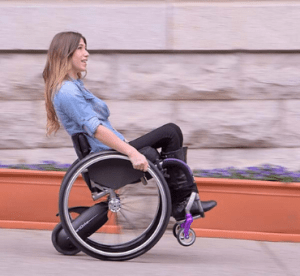
6. Do you want a folding or rigid wheelchair?
First things first, rigid active user wheelchairs can still fold — contrary to popular belief.
Lots of our clients initially think rigid wheelchairs don’t fold at all. They do, just not as well as a specialised folding wheelchair.
The difference is, a folding wheelchair has an ‘X’ frame, enabling it to fold in half, bringing the sides together. This makes the surface area of the chair smaller, and the chair can fit into surprisingly compact spaces.
Whereas, when a rigid wheelchair folds, the backrest folds down to the seat, and the wheels are quick release. So, they are easy to take off, this makes the wheelchair more compact for storage and transport.
Here is a table showing the advantages and disadvantages of rigid and folding wheelchairs:
| Type of Wheelchair | Who are the used by? | Advantages | Disadvantages |
| Rigid Wheelchairs
|
Usually used by athletes and young sports minded people. | – Less moving parts resulting in less maintenance and breakages.
– Stronger and hold up to the demands of travels, knocks and bumps much better. – Lighter as they have less metal in them. |
– The frame must be loaded as a whole, and they require a larger space to store or transport the wheelchair. |
| Folding Wheelchairs
|
Usually used by people that are going to use them less often, have plenty of upper body strength, but generally use their wheelchair sporadically for outings. | -Take up much less space when folded.- Due to the flexibility, when the wheelchair is used on rough terrain, all 4 wheels maintain contact with the ground.
– Less expensive. – Easier to fit complex seating systems on. |
– Generally heavier than rigid wheelchairs.
– Absorb more energy, meaning it is harder to push. |
Hopefully this busts some myths and gives you more understanding of what would suit you best.
7. Have you got any personal preferences?
So far, this blog has been focused a lot on clinical benefits and practical aspects of active user wheelchairs. But what you personally like is also important!
Here are some final details to think about:
- What type of backrest do you prefer? Unobtrusive and practical? Or supportive and comfortable?
- What kind of footrest do you want?
- What colour you would like? Take your pick — the choice is yours!
- Have you considered custom cushions? Express your personality while improving the physical comfort of your wheelchair
- What about LED caster wheels? They can add a sparkle of colour wherever you go.
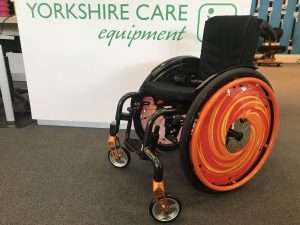
At the end of the day, it’s your wheelchair. Being happy with the look is just as important as getting the practical functions right.
Summary
Hopefully, this guide helps you feel more confident about choosing your active user wheelchair.
Whether you want a robust, rigid frame with mountain bike wheels or a compact, foldable model that fits easily in the boot, there are so many options to choose from.
Your active user wheelchair can be fully customised to your personal preferences and needs. For more help and support, please get in touch.
Book a free assessment with David
To book an assessment with our specialist David, please contact us.





